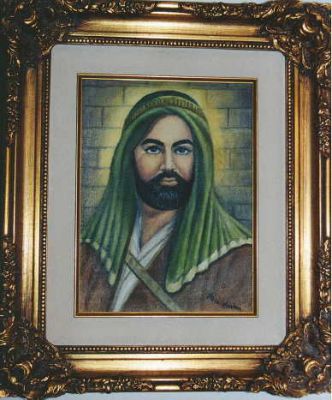 National Public Radio's Morning Edition is in the midst of a five-part series on Shiism this week. It's called "The Partisans of Ali: A History of Shia Faith and Politics" and is well worth listening to or reading online.
The first installment explains the source of the divide between Sunni and Shiite Muslims. The majority, who thought the community should pick its leader, became the Sunni. A smaller group, Shiites, wanted Muhammad's cousin and son-in-law, Ali, to succeed the Prophet. Their disagreements were violent from the beginning. The first installment also showed where Shiism took hold. The story is vividly told, as this transcript excerpt shows:
National Public Radio's Morning Edition is in the midst of a five-part series on Shiism this week. It's called "The Partisans of Ali: A History of Shia Faith and Politics" and is well worth listening to or reading online.
The first installment explains the source of the divide between Sunni and Shiite Muslims. The majority, who thought the community should pick its leader, became the Sunni. A smaller group, Shiites, wanted Muhammad's cousin and son-in-law, Ali, to succeed the Prophet. Their disagreements were violent from the beginning. The first installment also showed where Shiism took hold. The story is vividly told, as this transcript excerpt shows:
The war continued with Ali's son, Hussein, leading the Shia. "Hussein rejected the rule of the caliph at the time," says Vali Nasr, author of The Shia Revival. "He stood up to the caliph's very large army on the battlefield. He and 72 members of his family and companions fought against a very large Arab army of the caliph. They were all massacred."
Hussein was decapitated and his head was carried in tribute to the Sunni caliph in Damascus. His body was left on the battlefield at Karbala. Later it was buried there.
It is the symbolism of Hussein's death that holds so much spiritual power for Shia.
"An innocent spiritual figure is in many ways martyred by a far more powerful, unjust force," Nasr says. "He becomes the crystallizing force around which a faith takes form and takes inspiration."
The story explains that imams, Shiite clerics, have a spiritual significance that no Sunni clerics enjoy. Some Sunnis believe that Shiites venerate clerics too much, almost making them divine.
The second installment explains the political changes in Iran over the 20th century. It included this claim:
Iran (formerly Persia) was at its center, becoming the world's first Islamic state, a Shiite state, in 1979, led by Ayatollah Ruhollah Khomeini.
Didn't Muhammad establish the first Islamic state after he fled Mecca for Yathrib in the 7th century when he was the religious leader of Muslims and the political head of Medina?
The third installment traces the reaction in the Sunni world to Khomeini's revolution, the fourth shows how the Sunni-Shia divide is exploding right now in Iraq and the final installment looks at how that conflict is playing out worldwide.
In a series so heavy on politics, NPR has done a fantastic job of including religious angles and giving them the right prominence. Be sure to check back throughout the week for other installments. Also check out the sugested reading list, Sunni timeline and key Sunni players.
Another great example of reporting on Shias can be found in The Washington Post this week. Anthony Shadid, reporting from Egypt, shows that Shia and Sunni populations get along well in certain regions.
